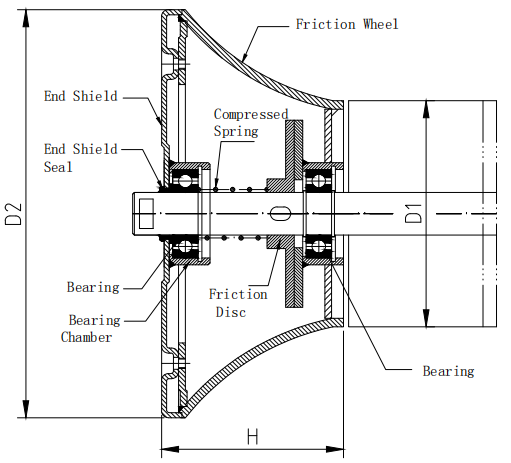 Afrikaans
Afrikaans  Albanian
Albanian  Amharic
Amharic  Arabic
Arabic  Armenian
Armenian  Azerbaijani
Azerbaijani  Basque
Basque  Belarusian
Belarusian  Bengali
Bengali  Bosnian
Bosnian  Bulgarian
Bulgarian  Catalan
Catalan  Cebuano
Cebuano  Corsican
Corsican  Croatian
Croatian  Czech
Czech  Danish
Danish  Dutch
Dutch  English
English  Esperanto
Esperanto  Estonian
Estonian  Finnish
Finnish  French
French  Frisian
Frisian  Galician
Galician  Georgian
Georgian  German
German  Greek
Greek  Gujarati
Gujarati  Haitian Creole
Haitian Creole  hausa
hausa  hawaiian
hawaiian  Hebrew
Hebrew  Hindi
Hindi  Miao
Miao  Hungarian
Hungarian  Icelandic
Icelandic  igbo
igbo  Indonesian
Indonesian  irish
irish  Italian
Italian  Japanese
Japanese  Javanese
Javanese  Kannada
Kannada  kazakh
kazakh  Khmer
Khmer  Rwandese
Rwandese  Korean
Korean  Kurdish
Kurdish  Kyrgyz
Kyrgyz  Lao
Lao  Latin
Latin  Latvian
Latvian  Lithuanian
Lithuanian  Luxembourgish
Luxembourgish  Macedonian
Macedonian  Malgashi
Malgashi  Malay
Malay  Malayalam
Malayalam  Maltese
Maltese  Maori
Maori  Marathi
Marathi  Mongolian
Mongolian  Myanmar
Myanmar  Nepali
Nepali  Norwegian
Norwegian  Norwegian
Norwegian  Occitan
Occitan  Pashto
Pashto  Persian
Persian  Polish
Polish  Portuguese
Portuguese  Punjabi
Punjabi  Romanian
Romanian  Russian
Russian  Samoan
Samoan  Scottish Gaelic
Scottish Gaelic  Serbian
Serbian  Sesotho
Sesotho  Shona
Shona  Sindhi
Sindhi  Sinhala
Sinhala  Slovak
Slovak  Slovenian
Slovenian  Somali
Somali  Spanish
Spanish  Sundanese
Sundanese  Swahili
Swahili  Swedish
Swedish  Tagalog
Tagalog  Tajik
Tajik  Tamil
Tamil  Tatar
Tatar  Telugu
Telugu  Thai
Thai  Turkish
Turkish  Turkmen
Turkmen  Ukrainian
Ukrainian  Urdu
Urdu  Uighur
Uighur  Uzbek
Uzbek  Vietnamese
Vietnamese  Welsh
Welsh  Bantu
Bantu  Yiddish
Yiddish  Yoruba
Yoruba  Zulu
Zulu belt scraper
The Belt Scraper Essential Equipment for Efficient Bulk Material Handling
In the realm of industrial operations, especially within sectors such as mining, agriculture, and manufacturing, the handling of bulk materials is a critical task. One essential piece of equipment that plays a pivotal role in this process is the belt scraper. This device, though often overlooked, is vital for maintaining the efficiency and longevity of conveyor systems.
What is a Belt Scraper?
A belt scraper is a specialized tool designed to clean the surface of a conveyor belt after it has transported bulk materials. Typically installed at the discharge point of the conveyor system, the scraper effectively removes residual materials stuck to the belt. These materials can include dirt, dust, and scraps from the materials being transported, which can accumulate over time. The belt scraper is equipped with various types of blades or brushes that engage the belt surface, ensuring it is clean before the belt returns to its loading point.
Importance of Belt Scrapers
The primary function of belt scrapers is to enhance operational efficiency by minimizing material carryback, which refers to the unintended transportation of bulk materials back onto the conveyor system
. Carryback can lead to several issues, including1. Increased Maintenance Costs Accumulated materials can cause significant wear and tear on conveyor components, leading to frequent repairs and replacement of parts.
2. Reduced Safety Slippery surfaces due to material buildup can pose serious hazards for workers. Removing these residues ensures a safer working environment.
3. Environmental Concerns Carryback can contribute to pollution as materials may fall off conveyors, contaminating the surrounding area. Effective scrapers help minimize such environmental impact.
4. Operational Downtime The need for cleaning and maintenance can cause considerable downtime in operations. Efficient belt scrapers significantly reduce this need, resulting in continuous production flow.
belt scraper

Types of Belt Scrapers
Belt scrapers come in various designs and materials, tailored to specific applications and material types. Here are the primary types
1. Primary Scrapers These are positioned at the discharge end of the conveyor and are designed to handle a high volume of material. They are typically robust and made from durable materials to withstand the rigors of bulk handling.
2. Secondary Scrapers Installed further along the conveyor system, these scrapers provide additional cleaning after the primary scraper. They are often made of softer materials to avoid damaging the conveyor belt while effectively removing residual material.
3. Specialty Scrapers Some applications may require unique scraper designs, such as those suited for heavy-duty or highly abrasive materials. These scrapers are designed to meet specific requirements, ensuring optimum performance.
Materials and Design Considerations
The choice of materials for belt scrapers is crucial. Common materials include rubber, polyurethane, and metal, each having its advantages. For instance, rubber and polyurethane scrapers are often used for their flexibility and resistance to wear, making them ideal for delicate belt surfaces. In contrast, metal scrapers provide durability and strength for handling heavier loads.
The design of the scraper blades also impacts their effectiveness. Profiles that are too rigid may not conform to the surface of the belt, leaving residues behind, while overly flexible blades may not exert enough pressure to remove stubborn materials. A well-engineered balance is critical for optimal performance.
Conclusion
In conclusion, the belt scraper is an indispensable part of any bulk material handling system. By effectively minimizing carryback, enhancing safety, and reducing maintenance costs, belt scrapers play a significant role in streamlining industrial operations. As industries continue to evolve and focus on efficiency and sustainability, the importance of reliable and effective cleaning solutions like belt scrapers cannot be overstated. Investing in high-quality scrapers is not just about maintaining equipment; it is about enhancing overall productivity and ensuring a safe working environment.
-
Revolutionizing Conveyor Reliability with Advanced Rubber Lagging PulleysNewsJul.22,2025
-
Powering Precision and Durability with Expert Manufacturers of Conveyor ComponentsNewsJul.22,2025
-
Optimizing Conveyor Systems with Advanced Conveyor AccessoriesNewsJul.22,2025
-
Maximize Conveyor Efficiency with Quality Conveyor Idler PulleysNewsJul.22,2025
-
Future-Proof Your Conveyor System with High-Performance Polyurethane RollerNewsJul.22,2025
-
Driving Efficiency Forward with Quality Idlers and RollersNewsJul.22,2025





























